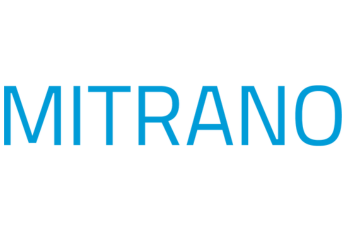PANSA

The Polish Air Navigation Services Agency (PANSA) is responsible for the provision of safe and sustainabale air navigation services within Polish airspace. PANSA is in the process of implementing SESAR innovations from aiming to develop new ATM infrastructure.
Maciej Rodak, Vice President for Air Navigation, PANSA

What is the added value of being a member of the SESAR 3 JU?
Being a part of the SESAR 3 JU enables PANSA to co-create with other stakeholders the future of the ATM and UTM in Europe. Knowledge and competences shared in the projects are the biggest value of the SESAR 3 JU.
Why is air traffic management and its digital transformation important to PANSA?
Digitalisation of the airspace allows faster and more accurate processing of data such as aircraft trajectories, which means that an air traffic controller is not only able to track its current position, but also see where it will be in a precisely defined period of time. Moreover, a fully scalable ATM system for manned and unmanned aviation will be even safer than today’s which is worth highlighting.
Digitalisation of the ATM is an essential in SESAR priorities. Digitalisation is a prerequisite for an increased level of automation, implementation of virtualisation technologies, as well as the use of standardised and interoperable systems. An advanced digital infrastructure is paramount in order to enhance airport and ATC capacity, increasing operational efficiency, reducing costs, delays and enabling new services in the future (e.g. drone-based, mobility, peer-to-peer services etc.). Several elements of the Common Projects 1 contribute to digitalisation, such as datalink and predominantly system-wide information managmenet (SWIM).
PANSA is fully aware that SWIM is a crucial step in the digitalisation process that supports the transition from physical to virtual infrastructure. Therefore, given SWIM increasing importance, we have submitted quite a few projects that fall under the CP1/SWIM area in the framework of the recent CEF transport call for proposals.
The development and implementation of digital solutions is the direction taken by PANSA in the context of post-pandemic challenges, including in particular increased air traffic.
What are PANSA’s top three innovation priorities?
PANSA’s top three innovation priorities are:
- Virtualised data collection and processing in the cloud, to manage big data streams in a unified format and one location.
- ADSP – ATM data service provision – PANSA ATM services will be provided from geographically unconstrained ADSP, that PANSA builds in contingency air traffic control centre in Poznań. ADSP will be provided from the resilient virtualised data centre. PANSA is focused on building ATM data production services and infrastructure layer.
- Digitalisation and automation of the processes done manually to become more sustainable and effective ANSP.
In which flagships of the Digital European Sky programme is PANSA particularly interested in getting involved, and why?
PANSA’a ambition is to be a proactive member of the SESAR 3 JU and contribute to the vision described in Strategic Research and Innovation Agenda, i.e.: to make the Digital European Sky the most efficient and most environmentally friendly sky to fly in.
PANSA focuses its research and innovation works on six flagships:
- Connected and automated air traffic management;
- Air–ground integration and autonomy;
- Capacity on demand and dynamic airspace;
- U-space and urban air mobility within the scope of ATM/U-space integration and Applications above very low level airspace;
- Virtualisation and cyber secure data-sharing;
- Civil/military interoperability and coordination within the scope of access to airspace.











